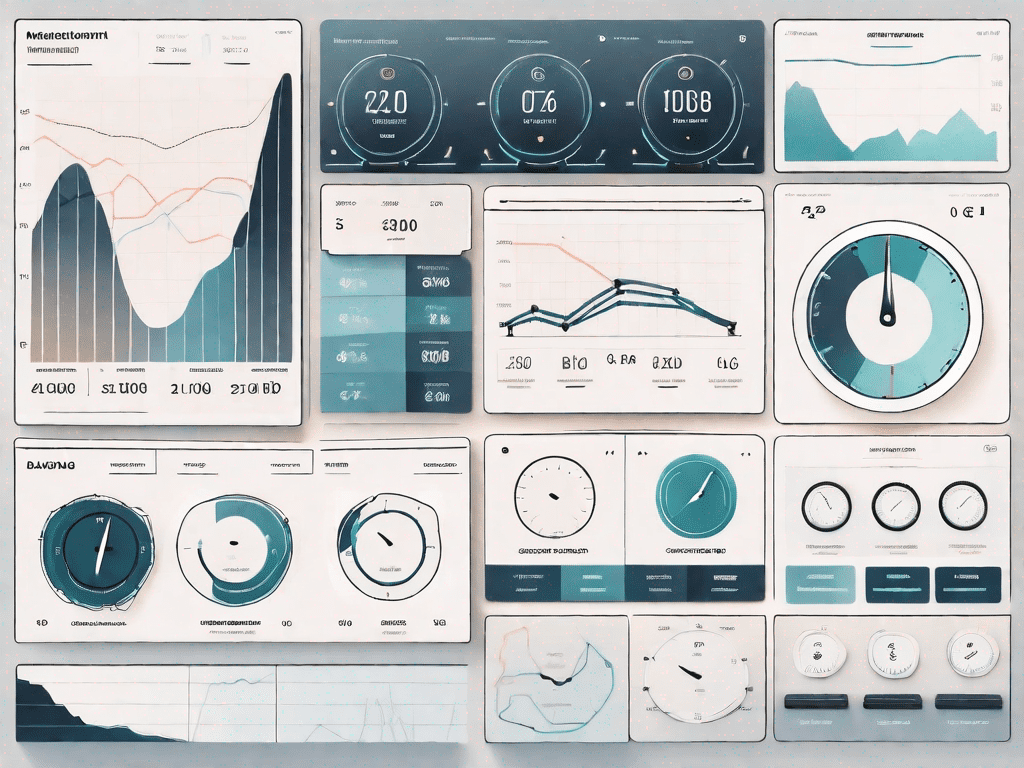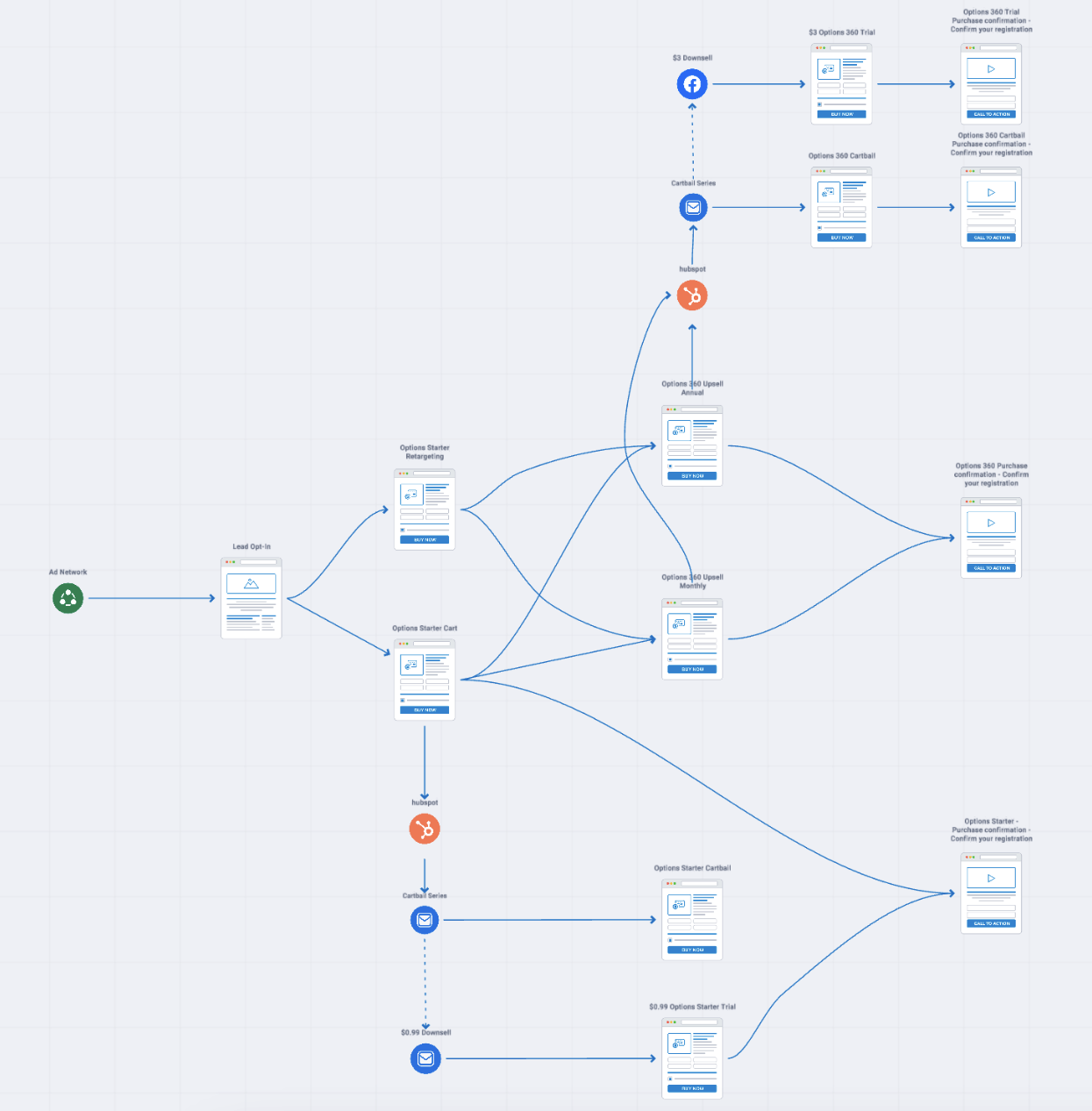Google Analytics is an indispensable tool for marketers looking to gain valuable insights from their paid media efforts. With its wide range of features and capabilities, this powerful platform provides a wealth of data that can be used to optimize campaigns and drive better results. In this article, we will delve into advanced Google Analytics strategies that will help you uncover valuable insights from your paid media initiatives.
Understanding the Basics of Google Analytics
Before we dive into advanced strategies, let’s first establish a solid foundation by understanding the basics of Google Analytics. This web analytics service allows you to track and analyze website traffic, user behavior, and conversions. By implementing a tracking code on your website, Google Analytics collects data that can be used to gain insights into the effectiveness of your paid media campaigns.
Google Analytics provides a wealth of information that can help you understand how visitors find and interact with your website. It tracks the source of your website traffic, whether it’s from organic search, paid advertisements, social media, or referrals from other websites. This data allows you to evaluate the success of your marketing efforts and make informed decisions about where to allocate your resources.
One of the key features of Google Analytics is its ability to track user behavior on your website. It can tell you which pages visitors are landing on, how long they stay on each page, and which pages they exit from. This information is invaluable for optimizing your website’s user experience and identifying any potential roadblocks that may be hindering conversions.
Importance of Google Analytics in Paid Media
Google Analytics plays a crucial role in understanding the impact of your paid media efforts. By tracking and analyzing the performance of your campaigns, you can identify areas where you’re excelling and areas that need improvement. Understanding how visitors interact with your website through paid media channels will enable you to make data-driven decisions and optimize your campaigns for better results.
When it comes to paid media, Google Analytics provides valuable insights into the effectiveness of your advertising campaigns. It can show you which ads are generating the most impressions and clicks, allowing you to evaluate their performance and make adjustments as needed. By analyzing the click-through rate (CTR) of your ads, you can determine how compelling they are to your target audience and make changes to improve their effectiveness.
Furthermore, Google Analytics can track conversions from your paid media campaigns. Whether your goal is to generate leads, drive sales, or increase newsletter sign-ups, Google Analytics can help you measure the success of your campaigns by tracking the number of conversions and attributing them to specific marketing channels. This information allows you to allocate your budget more effectively and focus on the channels that are delivering the best results.
Key Google Analytics Metrics for Paid Media
When it comes to paid media, certain metrics take center stage in evaluating campaign performance. Impressions, clicks, click-through rate (CTR), average position, and conversions are just a few examples of the key metrics you should monitor closely. By analyzing these metrics, you can gain insights into the effectiveness of your ad campaigns and identify areas for improvement.
Impressions refer to the number of times your ads are displayed to users. Monitoring impressions can help you gauge the reach of your campaigns and determine if your ads are being seen by your target audience. Clicks, on the other hand, measure the number of times users click on your ads. By tracking clicks, you can evaluate the level of engagement your ads are generating and assess their click-through rate (CTR).
The average position metric in Google Analytics tells you the average position of your ads in search engine results pages. A higher average position indicates that your ads are appearing at the top of the search results, which can lead to increased visibility and click-through rates. Monitoring this metric allows you to optimize your ad campaigns and improve their performance.
Finally, conversions are a key metric for measuring the success of your paid media campaigns. A conversion occurs when a user completes a desired action on your website, such as making a purchase or filling out a contact form. By tracking conversions, you can determine the effectiveness of your ads in driving valuable actions and make data-driven decisions to optimize your campaigns for better results.
Setting Up Google Analytics for Paid Media
Now that we have a solid understanding of the basics, let’s explore how to set up Google Analytics for your paid media campaigns. This step is essential to ensure accurate data collection and tracking, allowing you to make informed decisions based on reliable insights.
When it comes to setting up Google Analytics for paid media, there are several important considerations to keep in mind. By following best practices and implementing the right configurations, you can maximize the effectiveness of your tracking and gain valuable insights into the performance of your campaigns.
Integrating Google Analytics with Your Paid Media Channels
To ensure a seamless integration between Google Analytics and your paid media channels, you need to properly set up tracking parameters. This includes adding campaign tags or UTM parameters to your URLs, enabling Google’s auto-tagging feature, and linking your Google Ads account to your Google Analytics account. These steps will enable you to track the performance of your paid campaigns directly within Google Analytics for a comprehensive analysis.
When adding campaign tags or UTM parameters to your URLs, it’s important to use consistent naming conventions and ensure that the tags accurately reflect the specific campaign, source, medium, and other relevant information. This will allow you to easily identify and analyze the performance of individual campaigns within Google Analytics.
Enabling Google’s auto-tagging feature is another crucial step in integrating Google Analytics with your paid media channels. This feature automatically appends tracking parameters to your destination URLs, ensuring that campaign data is accurately captured in Google Analytics without the need for manual tagging.
Linking your Google Ads account to your Google Analytics account is essential for tracking the performance of your paid campaigns. This integration allows you to view detailed data on clicks, impressions, conversions, and other key metrics directly within Google Analytics, providing a comprehensive view of your paid media efforts.
Configuring Google Analytics for Optimal Data Collection
Configuring Google Analytics correctly is crucial to ensure accurate and meaningful data collection. Setting up goals and e-commerce tracking, enabling site search tracking, and establishing event tracking are some of the key configurations you need to implement.
Setting up goals in Google Analytics allows you to track specific actions or conversions on your website, such as form submissions, newsletter sign-ups, or purchases. By defining goals, you can measure the success of your paid media campaigns in terms of desired user actions, providing valuable insights into the effectiveness of your marketing efforts.
E-commerce tracking is particularly important if you have an online store. By enabling this feature in Google Analytics, you can track revenue, transactions, and other e-commerce metrics, allowing you to measure the ROI of your paid media campaigns and identify areas for improvement.
Enabling site search tracking in Google Analytics allows you to gain insights into how users are searching for content on your website. This information can help you optimize your site’s search functionality and identify popular search terms that can be used to inform your paid media targeting strategies.
Establishing event tracking in Google Analytics allows you to track specific user interactions on your website, such as clicks on buttons, downloads, or video plays. By tracking these events, you can gain a deeper understanding of user behavior and engagement, helping you refine your paid media campaigns for maximum impact.
By tailoring Google Analytics to your specific needs through proper configuration, you can collect the data necessary to gain insights into the performance of your paid media initiatives. This data will empower you to make data-driven decisions, optimize your campaigns, and achieve better results.
Advanced Google Analytics Strategies
Now that we have a solid foundation in place, let’s explore some advanced strategies that will help you dig deeper into your Google Analytics data and uncover valuable insights to optimize your paid media campaigns.
Utilizing Segmentation for Detailed Insights
Segmentation is a powerful feature in Google Analytics that allows you to filter and analyze data based on specific criteria. By segmenting your data, you can gain insights into the performance of different audience segments, such as location, device type, or referral source. This information can help you tailor your paid media campaigns to specific segments, improving relevance and driving better results.
Leveraging Multi-Channel Funnels for Comprehensive Analysis
Multi-Channel Funnels provide a holistic view of the customer journey across multiple touchpoints. By understanding how your paid media efforts contribute to conversions along with other channels, you can gain insights into the effectiveness of your overall marketing strategy. This information can help you allocate your budget more effectively and optimize your campaigns for maximum impact.
Applying Conversion Path Data for Performance Optimization
The conversion path report in Google Analytics shows the steps users take before completing a conversion. By analyzing this data, you can identify the most common paths users take on your website and determine which channels and campaigns contribute to conversions. This information can help you optimize your paid media initiatives by focusing on high-converting paths and eliminating bottlenecks.
Uncovering Insights from Paid Media Data
Now that we’ve covered advanced strategies, let’s explore how to interpret and use the data collected from your paid media efforts to gain actionable insights for campaign optimization.
Interpreting Paid Media Data for Actionable Insights
When analyzing paid media data in Google Analytics, it’s essential to look beyond surface-level metrics and dig deeper into the data. By examining trends, patterns, and correlations, you can uncover valuable insights that can inform your campaign optimization efforts. Whether it’s identifying underperforming campaigns or discovering untapped opportunities, interpreting paid media data is crucial for driving better results.
Using Google Analytics Reports for Paid Media Analysis
Google Analytics offers a wide range of reports specifically designed for analyzing paid media. These reports provide detailed information on campaign performance, user behavior, and conversion data. By leveraging these reports, you can gain insights into the effectiveness of your paid media efforts and identify areas for improvement. From analyzing keyword performance to evaluating landing page effectiveness, Google Analytics reports are invaluable tools for optimizing your paid media campaigns.
Optimizing Paid Media Campaigns with Google Analytics
Now that you have a comprehensive understanding of advanced Google Analytics strategies and how to uncover insights from your paid media data, it’s time to put this knowledge into action and optimize your campaigns for better results.
Enhancing Campaign Performance with Analytics Data
By continuously monitoring and analyzing your paid media data in Google Analytics, you can identify areas for improvement and take action to enhance campaign performance. Whether it’s refining ad targeting, optimizing landing pages, or adjusting bid strategies, using the insights gained from Google Analytics will allow you to make data-driven decisions that can significantly impact your campaign outcomes.
Continuous Improvement through Data-Driven Decisions
Optimizing paid media campaigns is an ongoing process, and data-driven decision-making is key to continuous improvement. By closely monitoring performance metrics, analyzing data, and experimenting with different strategies, you can refine and optimize your campaigns over time. With Google Analytics as your trusted companion, you have the tools you need to constantly improve and drive better results from your paid media initiatives.
Conclusion
In conclusion, advanced Google Analytics strategies provide marketers with a powerful toolkit to uncover valuable insights from their paid media efforts. By understanding the basics, setting up Google Analytics correctly, and utilizing advanced features, marketers can gain a comprehensive understanding of their campaigns, identify areas for improvement, and drive better results. With the right strategies and a data-driven approach, you can unlock the true potential of your paid media initiatives and achieve your marketing goals.



